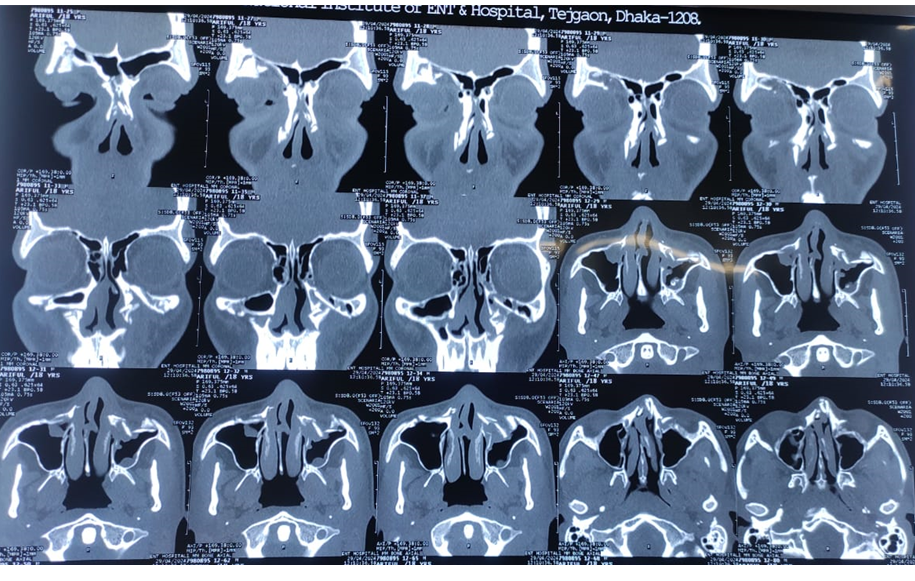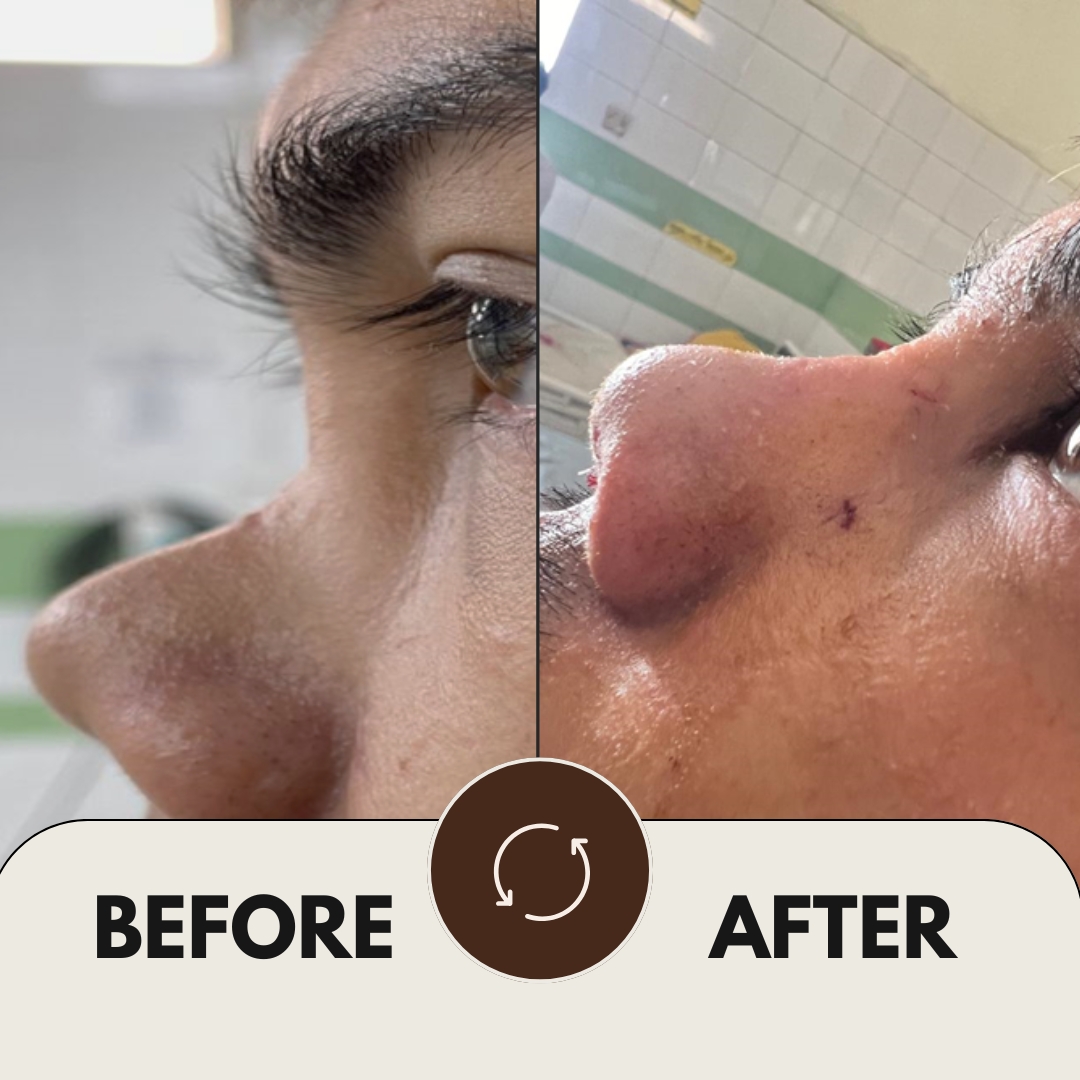Diagnosis—Saddle nose deformity
Case Study: Saddle Nose Deformity Correction through Rhinoplasty
Patient Information:
- Name: Ariful Islam
- Age: 18 years
- Sex: Male
Diagnosis:
Ariful Islam presented with saddle nose deformity, a condition characterized by the collapse or depression of the nasal bridge. This deformity can result from trauma, infection, previous surgery, or congenital causes, leading to both aesthetic concerns and functional breathing difficulties.
Symptoms & Concerns:
- Depressed nasal bridge
- Difficulty breathing through the nose
- Nasal obstruction
- Aesthetic dissatisfaction affecting confidence
Surgical Plan:
To restore the natural shape and function of the nose, rhinoplasty was planned. The procedure involved nasal reconstruction using cartilage grafting to rebuild the bridge and enhance structural support.
Surgery Details:
- Procedure: Open Rhinoplasty
- Technique: Cartilage grafting (taken from the nasal septum or ear)
- Anesthesia: General anesthesia
- Duration: Approximately 2–3 hours
Postoperative Care:
- Nasal splints placed for structural support
- Pain management and antibiotics to prevent infection
- Swelling and bruising subsided within a few weeks
- Breathing function improved significantly
Outcome:
The surgery successfully corrected the saddle nose deformity, restoring a natural nasal contour and improving breathing function. The patient reported high satisfaction with the aesthetic outcome and an improvement in nasal airflow.
Conclusion:
Rhinoplasty for saddle nose deformity is an effective solution for both cosmetic and functional concerns. In Ariful Islam’s case, precise surgical techniques and post-operative care ensured a successful transformation.


